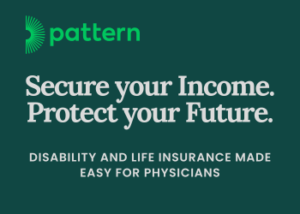“It’s a strange time to be having a baby,” my patient said as she sat alone in her labor room. The state order to shelter-in-place in California had left her family with few options as her husband had to stay home to take care of their toddler. She is one of many pregnant women who do not have the choice to even consider a home birth due to her congenital heart condition, which puts her at risk for sudden cardiac death.
She understood that she was part of a “high-risk” population, the ones with preexisting conditions that are more likely to have severe disease if they contract COVID-19. If she got sick, it would mean total isolation and separation from her baby and family for weeks.
I sat with her a little longer. She smiled, but I could see the fear and uncertainty in her eyes — fear of giving birth alone and of what life would look like with a newborn in our new apocalyptic reality. Pre-pandemic, I would have sat closer to her and even held her hand to ensure her that she was not alone. But I sat six feet away and consoled her from a distance and simultaneously wondered if she could sense my own fear and apprehension.
“I’m sorry that your husband can’t be here with you. These are unprecedented times for all of us, and we’ll do the best we can to keep you and your baby safe.”
We must be strong for our patients. As young physicians, we have seen our fair share of trauma, death, and despair. But most of us have never had to come face-to-face with our own mortality. Now, we have fear.
We are afraid of getting too close to our patients, our co-workers, and even inanimate objects for fear that we will contract the virus and be unable to continue doing what we love. We are afraid that we may unknowingly transmit the virus to our loved ones who may succumb to the disease. Our worst fear of all is one we share with the general public: getting sick and dying in isolation.
We have all heard the horrifying stories from Wuhan, Bergamo, Seattle, and now — New York City. Hospitals are overwhelmed beyond capacity, health care workers are getting sick, and doctors are being pulled from different subspecialties to provide intensive care to a growing number of critically ill patients. Perhaps the most frightening for those of us who work in maternity units is that asymptomatic pregnant women can be carriers of SARS-CoV-2, and not show any symptoms until after delivery.
This coupled with a nationwide shortage of personal protective equipment (PPE), has made going to work akin to walking into a war zone. There is no greater anxiety than being in close contact with a patient and later learning that they have risk factors for COVID-19. How are we supposed to protect ourselves if we do not know who to protect ourselves from?
As an obstetric anesthesiologist, I work closely with obstetricians and nurses to ensure a safe delivery for all women, especially those with high-risk conditions. We are no strangers to emergencies, as things happen quickly in labor and delivery. Babies are continuously monitored, and in the event of a sudden and prolonged heart rate deceleration, we rush the patient back to the operating room for an emergency C-section. A young, healthy woman can have a normal birth and then immediately afterwards have a life-threatening postpartum hemorrhage requiring blood transfusion. There is little room for deliberation in the unpredictable world of obstetrics.
For an emergency C-section, general anesthesia becomes necessary if there is not enough time to “top-up” the epidural with stronger medication or place a spinal injection. However, in the time of COVID-19, it is not just the mother and baby’s lives that are at risk. We must now consider the risks to health care workers if we put a COVID-19 patient to sleep, specifically the risk of aerosolization during tracheal intubation and extubation. Placing a breathing tube is one of the highest risk procedures to anesthesiologists in terms of viral transmission. There must be appropriate PPE for all staff who are in direct contact with the patient, especially the ones in close proximity to the airway.
Taking into consideration the risks of general anesthesia during the COVID-19 pandemic, excellent closed-loop communication amongst obstetricians, anesthesiologists, and nurses is paramount. As guidelines for testing and hospital visitor policies evolve, we must do everything we can to ensure the comfort and safety of both our patients and our colleagues. A rapid test that allows us to quickly identify and isolate infected patients can help curb the spread and ensure PPE is used appropriately. Health care workers are the most precious resource in a hospital system and should be protected so we can continue to take care of others.
No one can deny the collective sense of dysphoria in the air. We are grieving. Vacations have been canceled, weddings are postponed, and social gatherings have been reduced to video calls. Soon-to-be mothers are ridden with anxiety at the thought of possibly giving birth alone. Many have lost their jobs and are wondering how they will make ends meet. But the saddest among us are those who have lost or will lose a loved one to COVID-19. As health care workers, we feel a sense of anticipatory grief, watching our colleagues across the country fighting to save as many lives as possible. We have not reached the peak of the pandemic, yet it has exposed all the weaknesses of our health care system and society.
COVID-19 may forever change our standards of practice in labor and delivery; for now, there is a third “patient” we must look after — ourselves. As we share in each other’s grief during this pandemic, it is my hope that we will come out of these dark times, realizing what is truly important and practice more empathy with one another. The world needs it.
Maria Sheikh is an obstetric anesthesiologist who blogs at The Epidural Doc and can be reached on Twitter @MariaSheikhMD.
Image credit: Shutterstock.com




























![Breaking the cycle of sacrifice: from medical martyrdom to purposeful healing [PODCAST]](https://kevinmd.com/wp-content/uploads/Design-2-190x100.jpg)
![Better dizziness diagnosis through skilled exams [PODCAST]](https://kevinmd.com/wp-content/uploads/Design-3-190x100.jpg)
